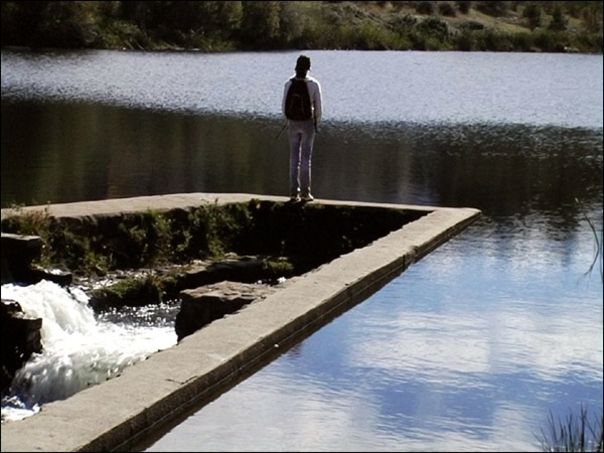Love As Artifice
Eddy Báez of the 2013 Talent Press Buenos Aires reviews the romantic comedy MAPA, directed by León Siminiani.

MAPA by León Siminiani
It all begins when Spanish director Elías León Siminiani decides to direct a "diary film" and on April 16th, 2008 leaves for India to shoot his first feature film. It is there where Elías - who has now become a character - discovers his fears, and does not know what to film or how to adapt himself to a reality that is so different from his own. He begins his discussions with "The Other" - his other self who contradicts him in every decision he takes - as well as a dispute about whether to follow his reason or his feelings. The fruitless search for inspiration or technique is gradually replaced with the need to find love, a partner, someone with whom to share this journey.
It is then when the character that will articulate and structure the rest of the story appears: Luna, who will guide Elias’s actions and feelings. (As well as a name, in Spanish “luna” means “moon”.) Their relationship splits the story into two parts: the first one where Elías gradually discovers he is in love with her and decides to return to Madrid. And the second part where he has to forget her. In between both parts, a four-minute montage summarizes a two-year ellipsis and fills us in on what has happened between them. But what is more important in this little moment is that the author reveals to us the artifices of romantic comedy. Because he is in fact making one, even if it he does not follow all the conventions of the genre.
Love, to talk about love, is what gives life to this film. It is a formula Siminiani has previously experimented with in his short film LÍMITES: 1RA PERSONA (2009) - the same short film he uses to start off this feature film. It is perhaps because of love being a universal feeling - all of us at some point feel the need to look for and find someone to love - that Siminiani chooses this subject to draw the audience's attention, or perhaps because he thinks that "where there is love there is film". The director transforms Luna into the motivational force; she is what moves Elías/the character, just as our natural satellite controls tides. Before Luna, he did not know what to film, after Luna either, but her existence is what allows him to move, even if it is to forget her. The love story is what allows Elías/the director to create a bond with the audience, so as to the able to question us and - with very good results - control us.
We would not be able to complete the ritual of oblivion without this process of identification between audience and characters, without the cohesion love as a subject gives to the story. A process that has required half of the film, so as to plant all the images referred to "Luna" that will then be repeated as a mechanism to give the film continuity: from finding a partner to forgetting her. Without "Luna" there is no love story, without love the director would not be able to reach the audience. And this is the cleverest move, it is this what allows him to reach different audiences, with a form that is not the usual in romantic comedies.
MAPA emerges after a long process of documentation by the author, halfway between fiction and documentary film. And it is this what makes it memorable. In this film, Siminiani expresses his need/capacity to control almost anything the audience feels and thinks. There is nothing left at random. Throughout the film, there seems to be an excessive correspondence between the words and the images that leaves no place to ambiguity. But that way of representing reality, of reorganizing what is real is the result of a series of experimentations this author has been since carrying out in his past short films. And by this, he demonstrates not only his love for film, but that he also takes pleasure in the hybridization of its forms.

